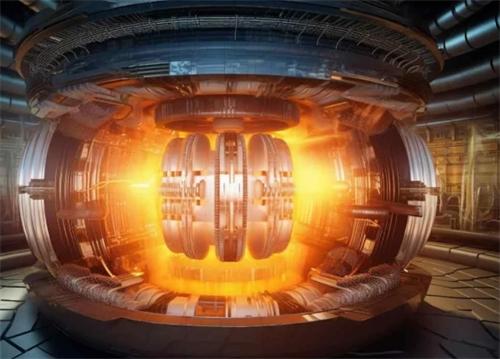China’s “Artificial Sun” Achieves 100 Million Degrees for Over 1,000 Seconds: How Close Are We to the Ultimate Energy Source?

In January 2024, Chinese scientists achieved a major breakthrough at the Experimental Advanced Superconducting Tokamak (EAST) in Hefei, Anhui Province. They successfully sustained a high-confinement plasma at 100 million degrees Celsius for 1,066 seconds. This achievement, dubbed the “100 million degrees for 1,000 seconds” milestone, not only shattered the device’s previous 2023 record of 403 seconds but also marked a significant step forward on the path to controlled nuclear fusion.
The Scientific Significance Behind the Breakthrough:
Nuclear fusion, often hailed as the “ultimate energy source,” works by replicating the energy-generation process of the sun—fusing light atomic nuclei into heavier ones under extreme temperatures and pressures, releasing enormous amounts of energy. Compared to nuclear fission, which powers today’s nuclear plants, fusion offers several key advantages: abundant fuel (deuterium can be extracted from seawater), no radioactive waste, and inherent safety.
To achieve controlled nuclear fusion, three critical conditions must be met: extremely high temperatures (over 100 million °C), sufficient plasma density, and a long enough confinement time.The combination of these three factors—temperature, plasma density, and confinement time—is called the “fusion triple product.” When this product reaches 10^22 keV·s·m⁻³, the fusion reaction can start producing more energy than it consumes, achieving what’s known as net energy gain (Q > 1). EAST’s recent achievement marks a significant move closer to that threshold.
Sustaining a fusion reaction at the 1,000-second level is necessary for it to become self-sustaining. This breakthrough marks the first time China has simulated the conditions needed for future fusion reactors in a laboratory setting. While it hasn’t yet reached the threshold for commercial net energy gain, it provides invaluable engineering experience for future applications.
China’s Progress in Nuclear Fusion Research:
In 1994, China’s first-generation superconducting tokamak, HT-7, successfully produced plasma. In 2006, the EAST device, developed entirely in China, was completed and operational—becoming the world’s first fully superconducting, non-circular cross-section tokamak.
Since then, the EAST team has continuously set new records:
2017: Achieved 101.2 seconds of high-confinement plasma operation
2018: Achieved stable plasma at 100 million °C
2021: Reached 120 million °C for 101 seconds and 160 million °C for 20 seconds
2023: Set a new record of 403 seconds
2024: Broke through the "100 million degrees for 1,000 seconds" barrier
These achievements are the result of decades of dedication and innovation. The EAST team has independently developed 68 key technologies, built 20 major subsystems, and achieved 100% domestic production. Compared to similar international projects, EAST was built with the lowest investment, the fastest pace, and fully independent intellectual property rights—earning it the nickname “artificial sun.”
The Road to Commercialization: Light on the Horizon, But Challenges Remain
Despite the recent breakthroughs, experts note that the commercialization of nuclear fusion still faces three major hurdles: scientific feasibility, engineering feasibility, and commercial viability. While the scientific foundation is largely established, researchers are now tackling engineering challenges.
Globally, several major fusion initiatives are underway:
ITER (International Thermonuclear Experimental Reactor): A multinational collaboration, with China contributing key components such as superconducting conductors
The China Fusion Engineering Test Reactor (CFETR) has finished its engineering design phase, with construction scheduled to begin by 2035.
Private-sector ventures: Innovative startups like Energy Singularity’s “Honghuang No. 70” and Startorus Fusion are also pursuing commercial fusion technologies.
Gong Xianzu, lead scientist of the EAST experiment, stated that the latest results demonstrate the feasibility of sustained high-confinement operation in a fusion reactor, offering critical insights for future engineering-scale reactors. However, significant technical hurdles remain—such as materials capable of withstanding extreme conditions and efficient energy conversion systems. Experts estimate that commercial fusion power is still at least 20 to 30 years away.
Recommended for you:








